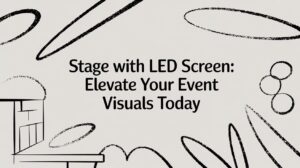
Stage with led screen: Elevate Your Event Visuals Today
Not long ago, a stage with an led screen was just a fancy backdrop. Now, it's the dynamic, beating heart of any modern live event.
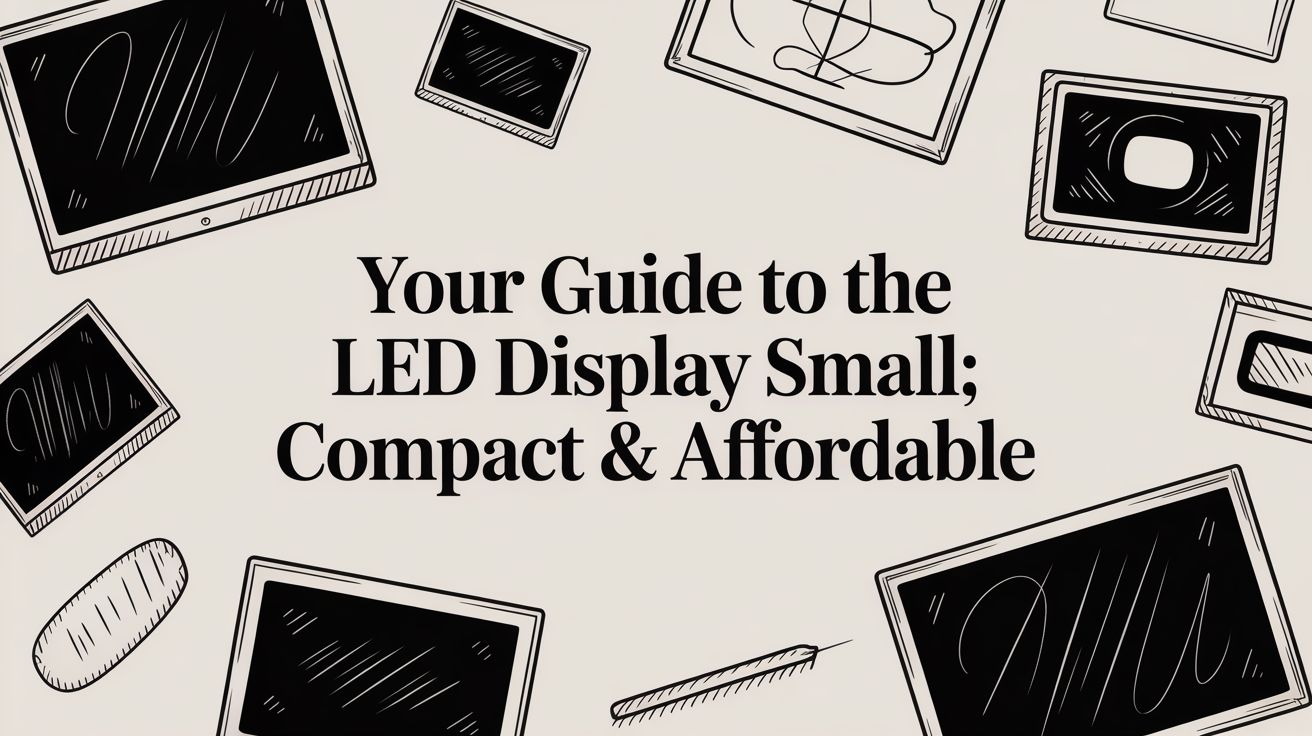
Forget massive stadium jumbotrons for a moment. When we talk about a small LED display, we’re not necessarily talking about its physical dimensions. Instead, we’re focused on something far more important for up-close viewing: its fine pixel pitch. This is the secret sauce that delivers stunningly sharp, high-resolution images that stay crystal clear, even when you’re standing just a few feet away.
It's this capability that makes them the perfect tool for close-up, personal engagement.
Most people hear "LED display" and picture those giant screens you see from the highway. But a "small LED display" belongs to a much more refined class of screen, where the real magic is happening at an almost microscopic level. The entire goal is to create a seamless, high-definition image that looks absolutely perfect from close range.
It all comes down to a term you'll hear a lot: pixel pitch. This is simply the distance, measured in millimeters, from the center of one tiny LED light to the center of the one next to it. For a huge outdoor billboard, that distance might be 10mm or more—and it looks just fine when you're driving by at 60 mph. But bring that same screen into a retail store, a corporate boardroom, or a hotel lobby, and it would look blocky and crude.
For these intimate spaces, you need a much smaller, or "finer," pixel pitch—typically under 2.5mm. This tight spacing is what eliminates the visible gaps between pixels, creating a smooth, unified picture that feels more like a high-end TV than a traditional sign.

Here’s a simple analogy: think of pixel pitch like the tiny dots that make up a photograph in a magazine. From a distance, the image looks whole. But if you hold it right up to your eye, you can start to see the individual dots. A small LED display works by shrinking those dots—and the space between them—so dramatically that your brain perceives a flawless, continuous image, even when you're standing right in front of it.
This breakthrough has completely changed the game, moving LED technology from distant, large-scale signage into settings that demand intimate and engaging visual experiences. The market has responded in a huge way. The global small pitch LED display market was valued at $2,424 million in 2023 and is on track to explode to over $10,640 million by 2031. This isn't just random growth; it’s a direct result of businesses realizing the power of this technology for everything from critical command centers to luxury retail.
The real advantage of a fine pixel pitch display is its ability to deliver the "wow" factor of a massive video wall in a more compact, high-clarity format built for indoor environments.
Before we dive deeper, it’s worth remembering how versatile LED technology is. It’s the same fundamental tech found in everyday items, including common LED lighting products like this 9-watt LED lamp. While a lamp is engineered purely for illumination, a small LED display uses arrays of those same tiny diodes to create dynamic, pixel-perfect visuals. It’s this crucial difference that separates simple lighting from a powerful communication tool.
Ultimately, a small LED display is really defined by its ability to do three things exceptionally well:
Diving into the tech specs of a small LED display can feel like you're trying to read a foreign language. Terms like "pixel pitch" and "nits" get thrown around a lot, but what do they actually mean for your project? Let's break down the jargon into plain English, so you can look at a spec sheet and know exactly what you're getting.
Think of an LED screen's picture like a high-quality photo in a magazine. From a distance, it looks perfectly sharp. But if you get your face right up to the page, you can see the tiny little ink dots that make up the image. An LED display works on the exact same principle.
For any small LED display meant for close-up viewing, pixel pitch is the most important spec, period. It’s simply the distance, measured in millimeters, from the center of one LED to the center of the one next to it. A smaller number means the LEDs are packed together more tightly.
Just like those ink dots, the closer the pixels are, the sharper and more detailed the image looks from a short distance. A screen with a 1.2mm pixel pitch will look unbelievably crisp from just a few feet away. But if you tried to stand that close to a 4mm pitch screen, you'd start to see the individual squares of light—not the seamless image you want.
This boils down to one simple rule: the closer your audience gets, the smaller (or finer) your pixel pitch needs to be. Getting this right is the difference between a mesmerizing display and a distracting, blocky grid of lights.
Choosing the right pixel pitch ensures that from the intended viewing distance, your audience sees a flawless, continuous image, not the individual pixels that create it.
To make this easier, we've put together a quick reference guide that connects pixel pitch to the ideal viewing distance and common use cases. It's a great starting point for figuring out what will work best in your space.
This table provides a quick reference to help you understand the relationship between a display's pixel pitch and the ideal minimum distance for a clear, pixel-free viewing experience. Use this to match a display's specs to your physical space.
| Pixel Pitch (mm) | Minimum Viewing Distance (Meters) | Ideal Use Case |
|---|---|---|
| 0.9mm | ~2.7 meters (8.9 feet) | High-end boardrooms, control rooms, home theaters |
| 1.2mm | ~3.6 meters (11.8 feet) | Corporate lobbies, premium retail, museum exhibits |
| 1.9mm | ~5.7 meters (18.7 feet) | Event stages, church sanctuaries, lecture halls |
| 2.5mm | ~7.5 meters (24.6 feet) | Storefronts, airport terminals, larger venues |
Once you understand this relationship, you're a huge step closer to picking the perfect display. It's one of the core ideas behind designing effective LED signs for businesses that grab attention for all the right reasons.
After pixel pitch, the next thing you need to check is brightness, measured in a unit called nits. In short, brightness determines whether your screen’s content can fight through the ambient light in the room and still look great. A screen that looks stunning in a dark room could look completely washed out in a sunny storefront.
It’s just like your smartphone. Indoors, you can keep the brightness low. The second you walk outside, you have to crank it all the way up just to see the screen. LED displays are no different.
Here’s a good rule of thumb for brightness levels:
Matching the brightness to the environment ensures your message is always vibrant and easy to read, no matter what.
Last but not least, let's talk about refresh rate. Measured in Hertz (Hz), this spec tells you how many times per second the screen redraws the entire image. This might sound overly technical, but its effect is incredibly easy to spot.
A low refresh rate can create a subtle (or not-so-subtle) flicker, which is especially noticeable if you try to record the screen with a camera. It can also make fast-moving video look choppy and blurred. If you’re only showing static images or text, a standard refresh rate like 1920 Hz will do the job just fine.
But if you're playing dynamic videos, live streaming, or have any reason to believe people will be filming your screen, a high refresh rate of 3840 Hz or more is a must. It guarantees that motion looks buttery smooth to both the naked eye and a camera lens, delivering that professional, high-end feel.
Picking the right small LED display isn't just about size—it's about matching the tech to the environment. An indoor screen designed for a hushed boardroom would die a quick death out in the elements. By the same token, a massive outdoor screen would be an overpowering, blindingly bright mess inside an office.
Getting this distinction right is crucial. It’s the difference between an investment that pays off and one that fails from day one.
The biggest differences come down to two things: how they handle light and how they stand up to Mother Nature. Think of it like a house cat versus a mountain lion. They’re both felines, sure, but they are built for entirely different worlds. One is made for comfort and precision, the other for raw power and survival.
This boils down to a few core specs—pixel pitch, brightness, and refresh rate—that really separate one type of display from another.
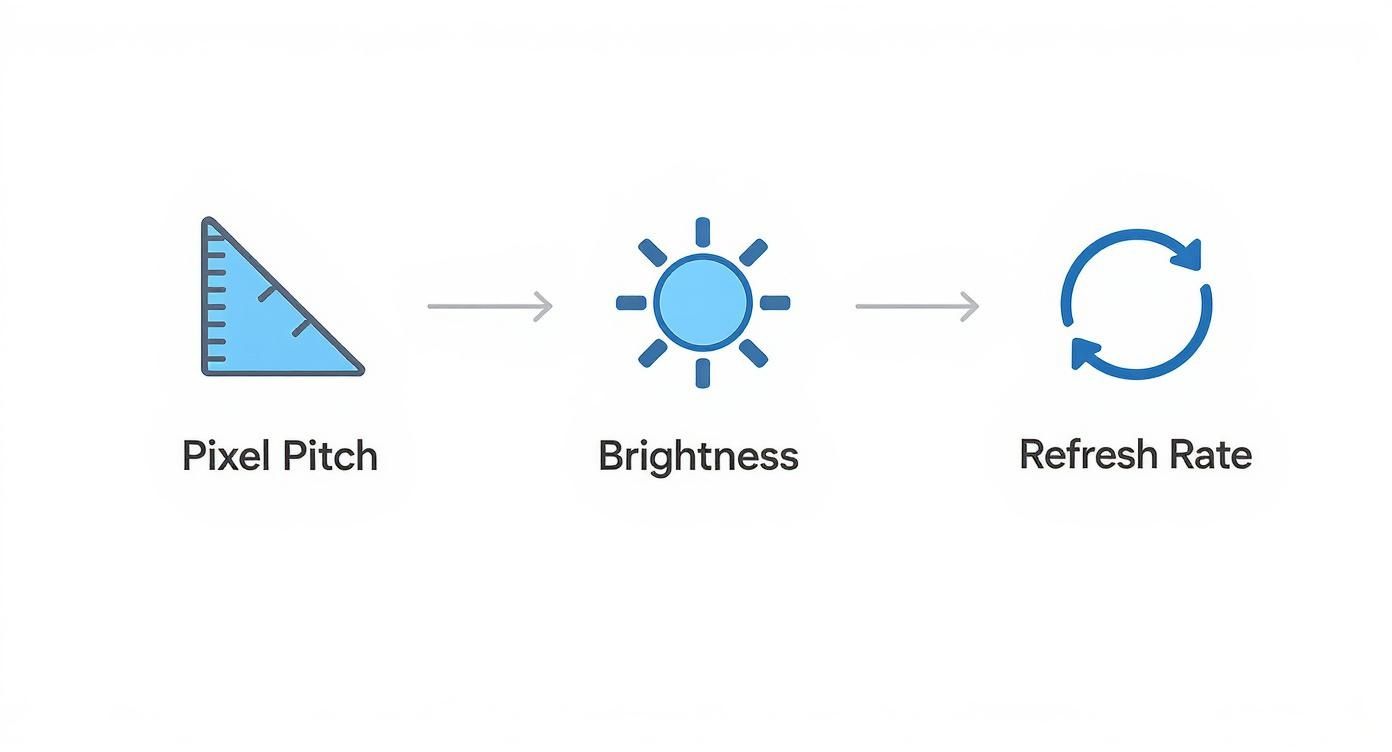
As you can see, these specs are all connected. The environment you’re installing in dictates the perfect balance you need to strike.
When you move indoors, the game changes. Indoor LED displays are all about creating a crisp, comfortable, high-detail viewing experience. Your audience is closer, and you have total control over the lighting, so the technical priorities shift.
First and foremost, pixel pitch is paramount. Tighter pitches like 1.2mm or 1.5mm are the go-to for indoor setups because they create those flawless, high-resolution images that look perfect even from just a few feet away. This is non-negotiable for places like corporate lobbies, control rooms, and retail shops where every detail matters.
Next, brightness is dialed way back. An indoor screen doesn’t have to fight the sun. Brightness levels usually sit between 600 and 1,200 nits, which is plenty vibrant without scorching your viewers' eyeballs. Anything more is just uncomfortable and a huge waste of energy.
Finally, they have to be quiet. Nobody wants a noisy, whirring fan distracting them in a boardroom or home theater. That’s why top-tier indoor displays often use fanless, passive cooling designs to dissipate heat silently. This attention to detail is a huge part of their appeal, and the market shows it. The indoor fine-pitch LED display market was valued at over $778 million in 2021 and is on track to nearly double to almost $1.4 billion by 2025.
Outdoor displays are a different breed entirely. They’re engineered to be seen in direct sunlight and tough enough to handle whatever nature throws at them—rain, snow, dust, you name it.
The core principle of an outdoor display is durability. Every single component, from the LEDs and circuit boards to the cabinet and seals, is designed to survive years of harsh exposure.
Here’s what makes them so tough:
This level of heavy-duty engineering is essential for any sign that has to live outside. To see these principles in action, check out our guide on designing powerful digital outdoor signage. Whether you need a sleek indoor screen or a resilient outdoor powerhouse, getting the type right ensures your message always comes through loud and clear.
All the technical specs in the world are great, but they don't tell the whole story. The real magic happens when you see how a small LED display solves actual problems and creates powerful, memorable experiences for businesses just like yours. Let's move from the spec sheet to the real world and explore how these screens are making a huge impact in retail, corporate offices, and public venues.
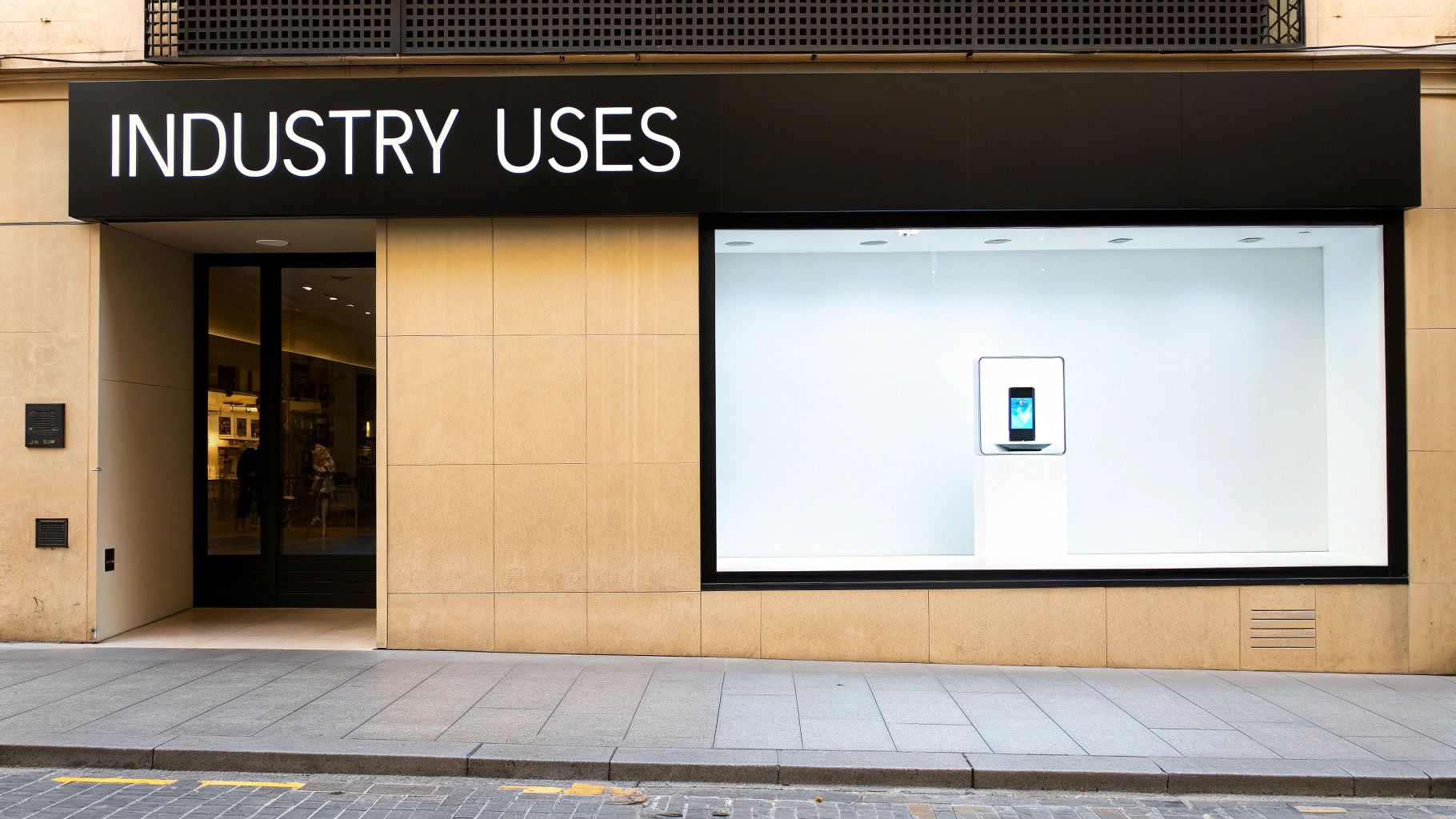
Each of these examples plays to a specific strength of LED technology, whether it’s about grabbing attention in a busy shopping mall or delivering critical information with absolute clarity. As you see how they're used, you can start to imagine what’s possible for your own space.
In the hyper-competitive world of retail, getting a customer's attention is half the battle. Small LED displays have been a total game-changer for brick-and-mortar stores, transforming dull, static walls into dynamic, can't-look-away experiences. Their ability to pump out vibrant, high-contrast video and graphics makes them impossible to ignore.
Take a luxury boutique, for example. They might install a super-crisp 1.5mm pixel pitch display behind their main counter. This isn't just a glorified price tag; it's a storytelling machine. It can loop high-fashion runway videos, zoom in on the fine craftsmanship of a new watch, or create a subtle, ambient visual that reinforces the brand’s entire vibe. The close viewing distance is why a fine pixel pitch is a must—it has to look flawless and premium up close.
In retail, a small LED display does more than just advertise. It becomes part of the store’s architecture and ambiance, influencing a shopper’s mood and driving purchase decisions right at the point of sale.
Here are just a few ways retailers are getting creative:
The corporate world has also caught on, using small LED displays to modernize how they communicate and make a powerful first impression. From lobbies to boardrooms, these screens are the perfect canvas for brand messaging, complex data visualizations, and slick presentations.
Picture walking into a corporate headquarters where an entire wall is a seamless 1.2mm pixel pitch LED display. Instead of a boring, static logo, it’s showing a cinematic video on the company's history, glowing customer testimonials, or even a live feed of its global operations. That creates an immediate "wow" factor for visitors and employees alike.
And in the boardroom? They've completely replaced old-school projectors. The ultra-high resolution ensures that every detail on a dense chart or spreadsheet is perfectly sharp for everyone in the room. Plus, their high brightness means you can keep the lights on for a collaborative meeting without the picture washing out.
For restaurants, cafes, and event venues, being able to change information on the fly is a massive advantage. Small LED displays are quickly taking over from static menu boards and printed event schedules, making operations smoother and giving customers a better experience.
Think about a popular fast-casual restaurant using digital menu boards above the counter. With just a few clicks, the manager can:
It works just as well in a concert hall or conference center. A small LED display can act as a digital guidepost for attendees, show a live social media feed to get people talking, or broadcast a close-up of the keynote speaker so nobody misses a thing. The key here is a high refresh rate like 3840 Hz, which guarantees a smooth, flicker-free image—even when people are recording it on their phones.
A brilliant small LED display is a great start, but it's only half the battle. The real magic happens when you nail two often-overlooked details: a perfect physical installation and a dead-simple system for managing your content. Get these right, and your screen won't just look professional—it'll work for you day in and day out without becoming a technical headache.
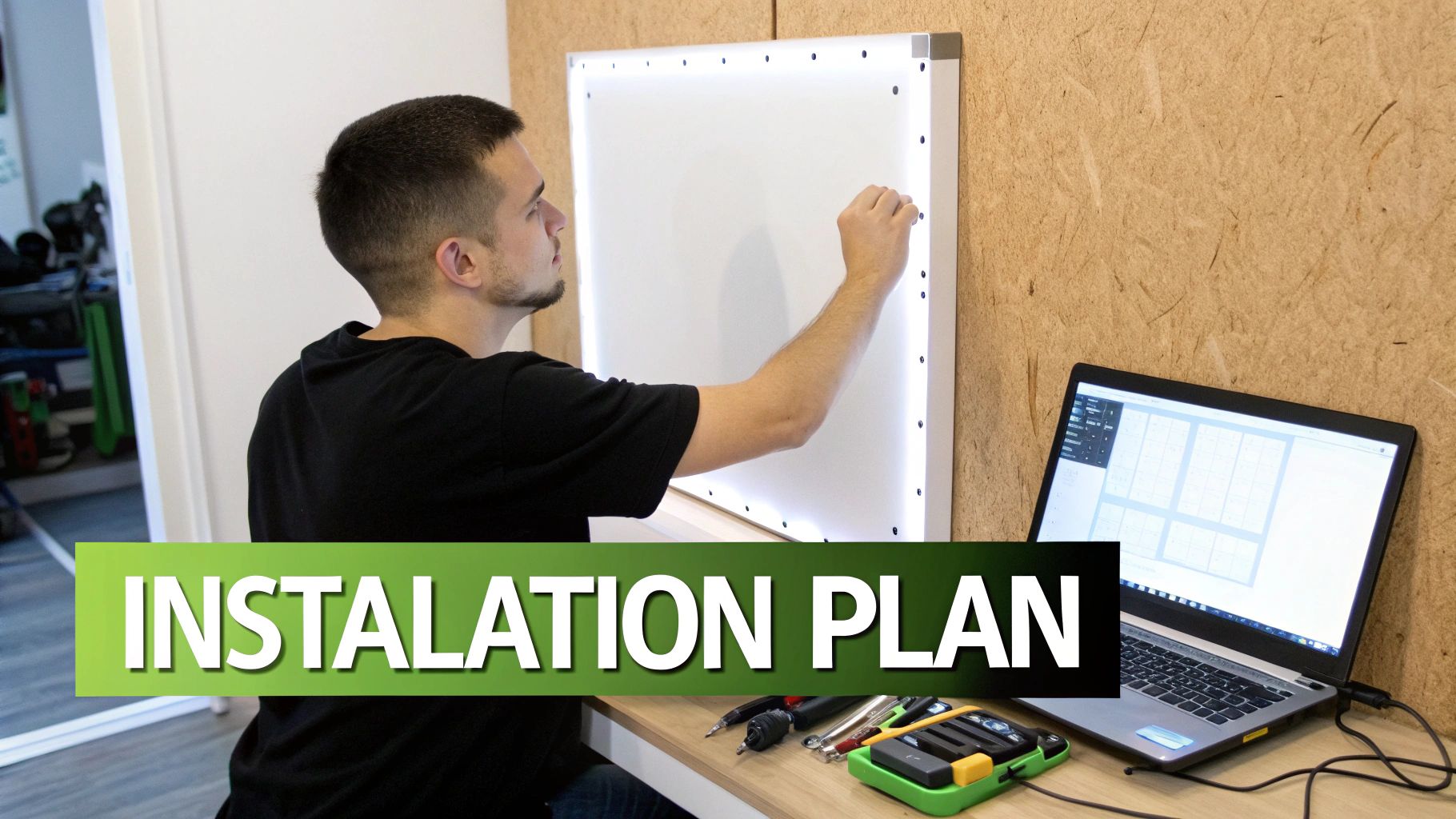
This part of the process is all about bridging the gap between your big idea and the physical reality of your space. It means thinking ahead about power, structural support, and the software that will ultimately bring your screen to life.
First things first: you need to figure out exactly how and where this display is going to live. This is way more than just drilling a few holes. A poorly planned install can lead to overheating, a mess of visible cables, or even damage to your wall. It’s about thinking through the entire setup for the long haul.
You've got a few solid options for mounting:
No matter how you mount it, planning for power and ventilation is non-negotiable. A clean install means no one sees the wires. And giving the screen room to breathe is crucial to preventing overheating, which helps it reach its full 80,000 to 100,000-hour lifespan.
Once your screen is up, you need a way to tell it what to show. That's where a Content Management System (CMS) comes in. Think of it as the brain behind the screen—the remote control that lets you upload, schedule, and manage everything that plays on it.
Without a good CMS, your brand-new display is just an expensive, blank box. The right system, however, lets you update promotions, change menus, or schedule brand videos from anywhere with an internet connection. It turns a static screen into a powerful, dynamic tool.
The CMS you pick really depends on your comfort level with tech and what you plan to do with the screen.
Comparing CMS Options
| CMS Type | How It Works | Best For | Technical Skill |
|---|---|---|---|
| Plug-and-Play (USB) | Load content onto a USB drive, plug it into the display, and you're set. | Single-screen setups where you don't need to change content very often. | Beginner |
| Local Network Control | Software on a PC on the same local network controls the screen. | Offices or stores where content is always managed on-site. | Intermediate |
| Cloud-Based Platform | A web portal lets you manage one screen or a hundred from anywhere in the world. | Businesses with multiple locations or anyone who needs remote access. | Intermediate |
For most businesses, a cloud-based platform is the sweet spot, offering the best mix of flexibility and control. It lets a marketing team in one city update content across an entire chain of stores instantly, keeping branding consistent and promotions timely. A small LED display paired with a smart CMS is a killer combination for any modern business.
So, you're thinking about investing in a small LED display. This is more than just buying a new piece of tech; it's a strategic move. To do it right, you need to look at the full financial picture, not just the sticker price. A smart budget considers the total cost of ownership, which includes the screen itself plus all the other pieces needed to get it up and running flawlessly.
Think of it like this: the display is the engine, but you still need the car's body, wheels, and steering to actually go anywhere. Forgetting about critical components like mounting hardware, control software, and professional installation can lead to surprise costs that blow your budget apart.
When you get a quote for a small LED display project, you need to know exactly what’s in that number. A good quote isn't just a single figure; it’s a clear breakdown of everything required to take your project from an idea to a finished, working installation.
Here are the main cost buckets you absolutely need to account for:
Getting a handle on these elements means no nasty surprises later. To see how these factors play out in real numbers, you can explore detailed guides on the cost of outdoor LED signs, as many of the same principles apply to indoor displays, too.
Once you’ve nailed down the costs, the big question is always, "What's my return?" Measuring the ROI on a small LED display isn’t always a simple dollar-for-dollar calculation. It all comes down to your specific goals, because often, the biggest returns are in influence and engagement.
For a retailer, the ROI can be very direct and measurable. You can track things like an increase in foot traffic after installation, a noticeable sales lift on products featured on the screen, or more people signing up for your loyalty program.
An effective LED display doesn't just display information; it actively influences customer behavior, enhances brand perception, and creates memorable experiences that drive long-term loyalty and revenue.
But what about a corporate office or a public venue? Here, the ROI is measured differently but is just as crucial. It might be seen in better employee communication and morale, a more modern and impressive visitor experience in the lobby, or more engaging and effective training sessions in a boardroom. In these scenarios, the return is about boosting efficiency and making a bigger impact, which is incredibly valuable to any organization's mission.
As you get closer to making a decision, you probably have a few practical questions bouncing around. It's smart to think about the long-term details—after all, you want to be confident your new screen will perform beautifully for years.
Let's tackle some of the most common questions we hear from clients just like you.
Think of a quality LED display as a long-term investment in your space. A well-built screen will give you 80,000 to 100,000 hours of runtime. That’s over a decade of continuous, round-the-clock operation.
The secret to that longevity comes down to the quality of the individual LED diodes and the power components working behind the scenes. To get the most out of it, just make sure it has good airflow and give it a quick clean every now and then. It really makes a difference.
Honestly, you’ll be surprised at how low-maintenance these displays are. For an indoor screen, a gentle dusting is usually all it takes to keep the picture crisp and vibrant. No complicated procedures are needed.
For outdoor models, you'll just want to do a quick periodic check to make sure the weatherproof seals are clear of any debris. Most modern systems also come with diagnostic software that flags any potential issues for you, and if a module ever needs replacing, it's a simple swap-out that takes minutes.
"Modern LED displays are built for reliability. The modular design is a key feature, allowing for simple, fast service if a single component fails, without ever having to take down the entire screen."
This is where the fun really begins. One of the biggest advantages of a modern LED display is its incredible versatility—if you can create it on a computer, you can show it on the screen.
You're not locked into any one format. You can run a whole mix of media, including:
Whatever content management system (CMS) you go with will make it a breeze to upload, schedule, and organize all your different media.
Ready to bring your vision to life with a stunning, reliable small LED display? The experts at Smart LED Inc. can help you design the perfect solution for your space. Explore our custom LED video walls and get a quote today.

Not long ago, a stage with an led screen was just a fancy backdrop. Now, it's the dynamic, beating heart of any modern live event.
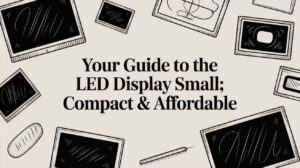
Forget massive stadium jumbotrons for a moment. When we talk about a small LED display, we’re not necessarily talking about its physical dimensions. Instead, we’re
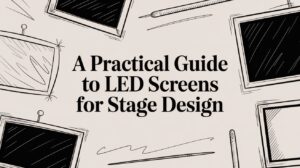
LED screens on stage aren't just backdrops anymore—they're the pulsing, dynamic heart of today's live events. These huge digital canvases are designed to be insanely
"*" indicates required fields